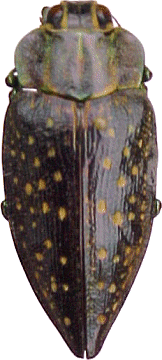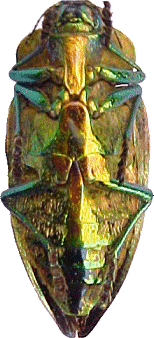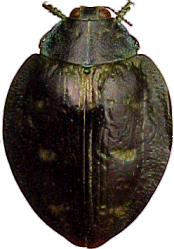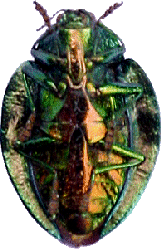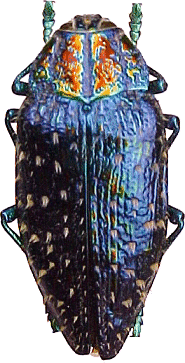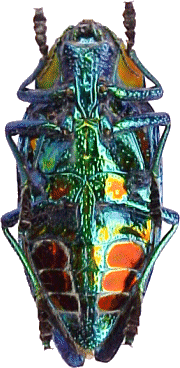CRYPTISM
Many species in any group of Animals use to defend themselves acquiring
colours, shapes and movements of their habitat. This is the way they use
to become virtually invisible to their predators. It is true in any kind
of habitat, in the sea, in a rain forest or in a desert.
Many Buprestidae are cryptic. A large part of them use green colours
to imitate leaves. Especially in wet tropical countries their bright green
colour allows them to mingle with the dewy vegetation. But the same colour
is used in temperate zones by some species. |
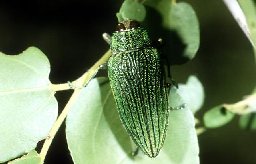 |
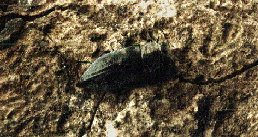 |
Many other Buprestidae have a brown, grey, copper colouration, very
similar to the bark of trees where they spent a lot of their time of reproduction.
Some of them use to turn around trunks and branches to hide themselves
when they perceive a predator, or an entomologist! |
Others (Julodis) stay hanging to small branches of bushes; so
they stay in the shade (it may be very usefull in very hot places) and
are less visible to birds and it's possible they are mistaken for fruits.They
can also try to save themselves falling in thanatosys (I can assure it's
not easy to see a motionless and dusty Julodis near a bush on the ground
covered with dried leaves, seed, dust, etc.). |
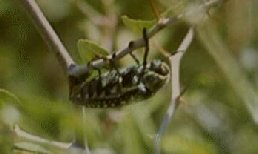 |
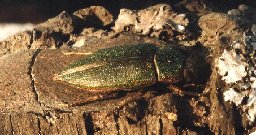 |
Many species, evolved to be less visible among leaves, become easy
to see when stay on a trunk to reproduce, but usually this happen in a
very short time. |
Many species use cryptic colouration, brown, grey, black, etc. on their
dorsal side (head, prothorax and elitrae) and bright colours for
their abdomen and ventral side, so they can hide themselves when they stay
on a bark, but they can become visible to the other sex if they need. Like
among many lepidoptera, these species become bright and easy to see when
they are flying (the body, under their elytrae, is always bright, usually
green/blue or golden), but dark and cryptic when they stop on trunks or
barksWe can observe some of these species in any Fauna, but they are particularly
in evidence in Madagascar, where we can find a lot of species of Polybothris
showing this adaptation.
Polybothris pandus: dorsal and ventral view
Polybothris auriventris: dorsal and ventral view
There are also few Polybothris with bright colours underside and upperside:
Polybothris sumptuosa gema: dorsal and ventral view
There is another way to confound the sight of a predator, usually a
bird: showing a disruptive colouration. It is obtained with stripes or
large spots of very different colours to make hard to understand where
a body start and where the same end. It's well known in many Vertebrates
and zebra is probably the best known species using it. But it's also used
by Buprestidae, especially several Indomalaysian species. Here, we can
see few examples, all in subfamily Chrysochroinae:
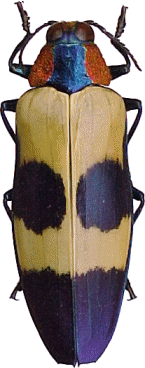 |
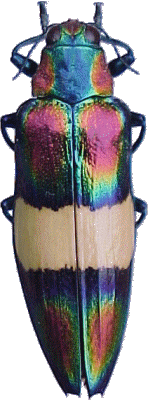 |
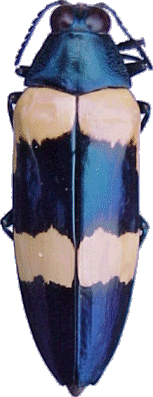 |
|
Chrysochroa bouqueti - Thailand
|
Chrysochroa ocellata ephippigera - Malaysia
|
Chrysochroa mniszechi - Thailand
|
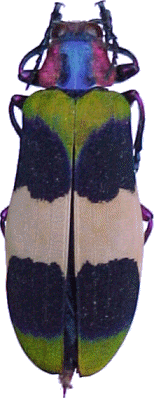
|
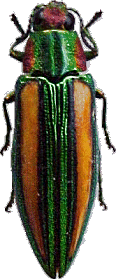
|
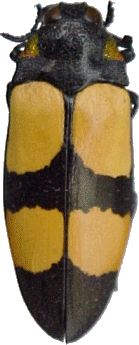
|
|
Chrysochroa corbetti - Thailand
|
Chrysochroa lepida - Namibia
|
Agelia peteli - Zimbabwe
|




